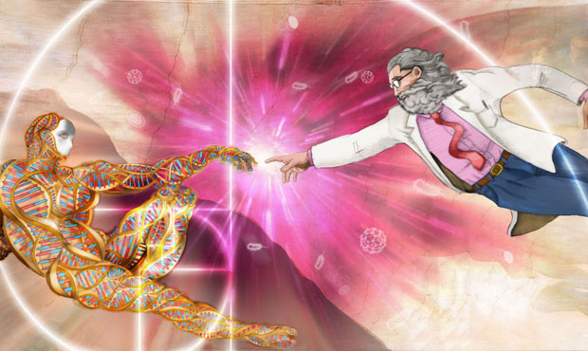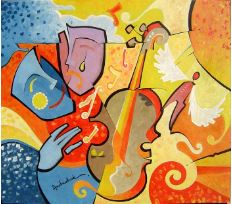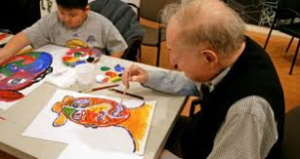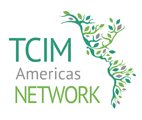The Medicine and Art

 Una serie de Talleres experimentales llevados a cabo en el Museo de Bellas Artes en la ciudad de Boston, están desarrollando una experiencia innovadora en la que se evalúa la sinergia de la #Medicina y el #Arte, a través de programas de formación y sensibilización para estudiantes de la Facultad de Medicina.
Una serie de Talleres experimentales llevados a cabo en el Museo de Bellas Artes en la ciudad de Boston, están desarrollando una experiencia innovadora en la que se evalúa la sinergia de la #Medicina y el #Arte, a través de programas de formación y sensibilización para estudiantes de la Facultad de Medicina.
El programa tiene por objetivo promover la sensibilización de los estudiantes de Medicina acostumbrados a la experiencia reiterada de la muerte de los pacientes, circunstancia que tiende frecuentemente a desarrollar un carácter de desensibilización extrema en muchos profesionales que ejercen la Medicina. La propuesta del Museo en este programa pretende estimular en los estudiantes una reflexión acerca del modo en que el arte puede, efectivamente, causar un efecto sensibilizador e integrador a través de la experiencia estética.
Talleres de Arte para Médicos
Este programa, que continúa vigente en el Museo de Boston, proporciona a los participantes un espacio de reflexión para crear grupos de trabajo y que sus participantes puedan desarrollar sus herramientas de comunicación y expresión. El programa está dirigido no solamente a estudiantes residentes de medicina sino también a otros profesionales de la salud.
Varios participantes han expresado su sorpresa y entusiasmo ante los resultados obtenidos por su participación en el programa, señalando especialmente su efectividad para ayudarlos a conectar con sus emociones relacionadas específicamente con su profesión, como una oportunidad de reflexión profunda, con un cierto sentido liberador y terapéutico.
Humanización de la práctica médica
 No sólo la experiencia estética ha resultado ser una herramienta eficaz en la re-conexión de la experiencia emotiva de los participantes profesionales con sus profesiones y sus vidas, sino que también se han implementado otras alternativas interesantes en el campo de la práctica terapéutica, para hacer posible la humanización de la profesión médica y sus practicantes.
No sólo la experiencia estética ha resultado ser una herramienta eficaz en la re-conexión de la experiencia emotiva de los participantes profesionales con sus profesiones y sus vidas, sino que también se han implementado otras alternativas interesantes en el campo de la práctica terapéutica, para hacer posible la humanización de la profesión médica y sus practicantes.
Así por ejemplo, el humor como terapia está alcanzando un amplio reconocimiento en la práctica terapéutica en muchos ámbitos de la vida, especialmente en lo referente a la sensibilización de los profesionales de la medicina. Prácticas como las de los “doctores clown” que se iniciaron a finales de los años 80 en varios hospitales de los Estados Unidos, son hoy en día aceptadas y reutilizadas para ayudar a mejorar la relación médico-paciente.
La risa es sin duda una de las mejores estrategias para “romper el hielo” y facilitar el acercamiento y la comunicación entre las personas. En España hay diversos grupos organizados que utilizan estas terapias complementarias como recursos de sensibilización y acercamiento de la relación médico-paciente. Por ejemplo en Madrid se han organizado conferencias en el Hospital San Carlos sobre la risoterapia, gestionado por la Consejería de Sanidad de la Comunidad de Madrid.
 Cada vez más profesionales de la medicina convencional integran en su práctica, sistemas médicos y terapias alternativas y complementarias, como la meditación mindfulness, el reiki, musicoterapia, arteterapia, varias de ellas ya están reconocidas por la OMS (Organización Mundial de la Salud) y reguladas en algunos países como técnicas de “sanación” terapéutica.
Cada vez más profesionales de la medicina convencional integran en su práctica, sistemas médicos y terapias alternativas y complementarias, como la meditación mindfulness, el reiki, musicoterapia, arteterapia, varias de ellas ya están reconocidas por la OMS (Organización Mundial de la Salud) y reguladas en algunos países como técnicas de “sanación” terapéutica.
Este fenómeno de integración de prácticas complementarias en salud, desde el arte se está dando tanto en Europa, como en muchos países de América.
Basado en la FUENTE original: https://es.blastingnews.com/ocio-cultura/2018/02/la-medicina-y-el-arte-en-sinergia-002333021.html.


